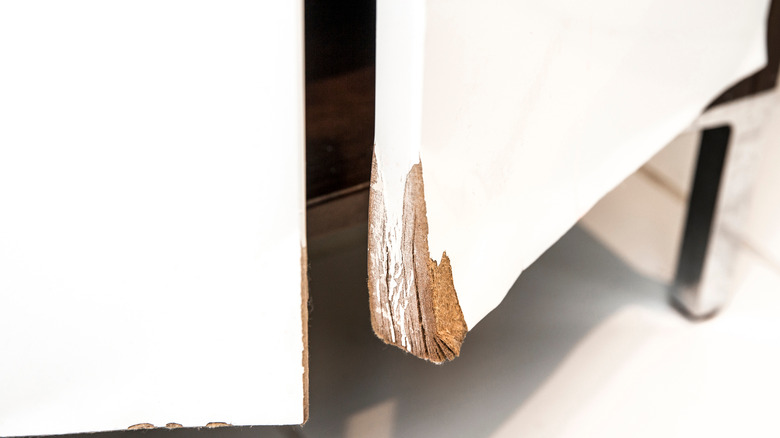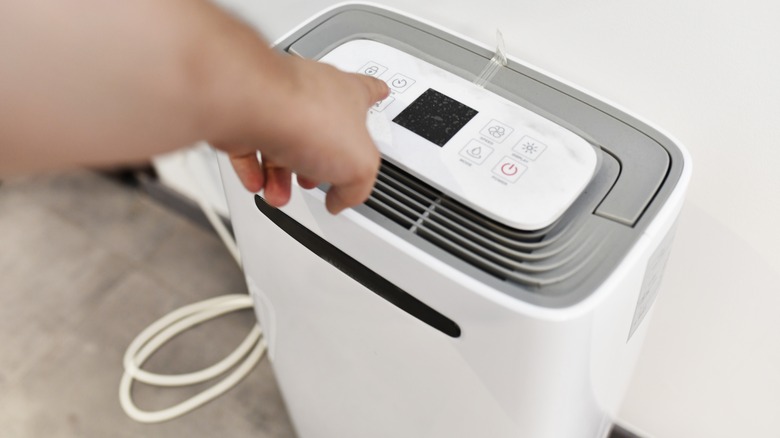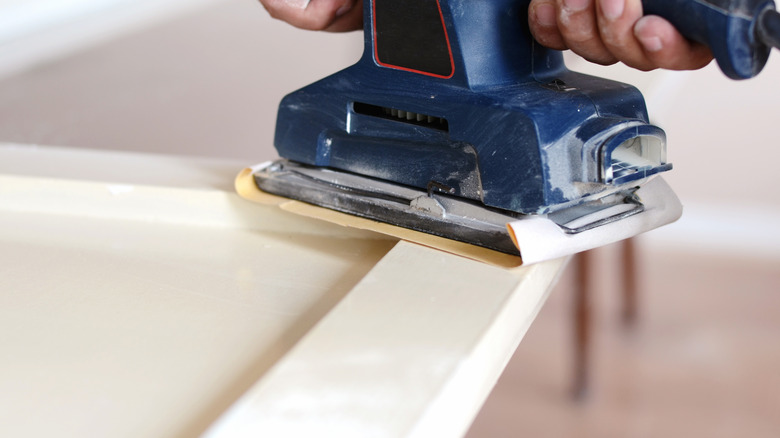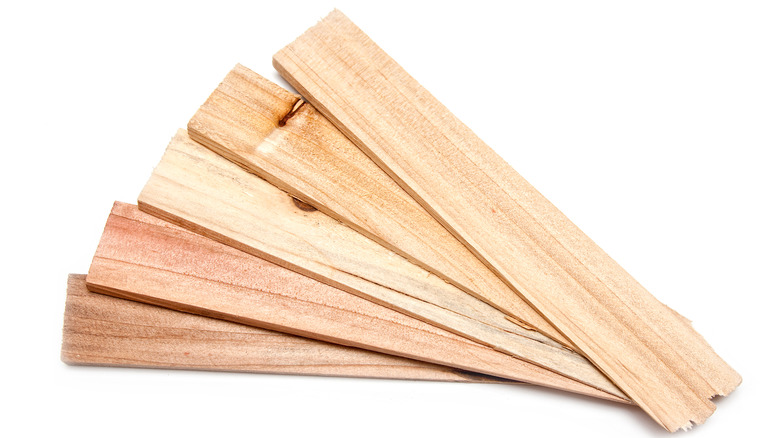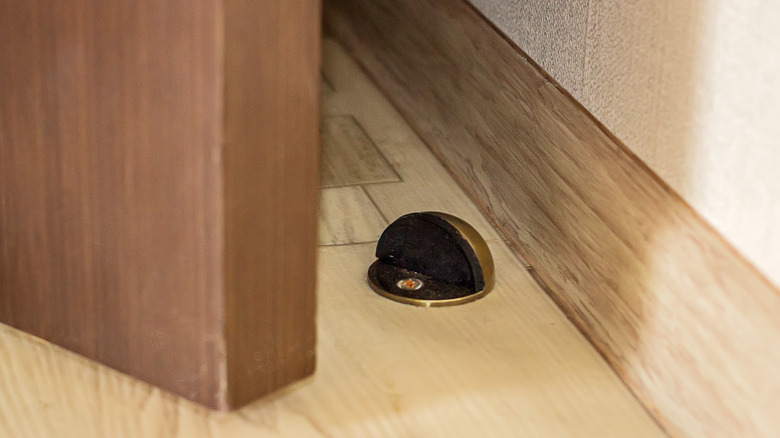5 Easy Ways To Restore Your Warped Door
It can be quite a bother when a door stops closing or starts opening on its own. Your security is at risk and your household becomes more vulnerable to pests. According to United Locksmith, a door can get jammed due to warping, and here's how that happens: High humidity and temperatures can increase the moisture content of the air. And when the wood cell fibers of your wooden door absorb this moisture, they get distorted and this leads to warping, Wood Finishes Direct explains.
As noted by Door Design Lab, keeping your furnace active all day can also dry out the air's moisture content and lead to warping. If you have multiple finishes on your door — say there's lacquer on one side and varnish on the other — it can also cause the door to become warped. Whatever the case may be, if your door is indeed warped, you don't need to fret. Here are five easy ways to restore it.
Use a sandbag
According to The Heritage Collection, sandbags come in handy in cases where your door is slightly warped. First, you need to remove the door from its frame by carefully unscrewing the hinges. Bunnings says you'll have better luck if you start with the hinges on the door frame before you move on to the hinges on the door.
After the door has been removed, place it on a beam or two sawhorses for support. Next, get a sandbag and place it on the warped area of your door. Leave it for a non-specific amount of time — preferably till the warp is gone. If it is not gone after about 24 hours, then you could place some extra weight, such as wet towels or blankets, on the warped area. Then leave it there until it's straightened, then dry your door and screw it back to its hinges. Finally, test your door.
Eliminate high levels of humidity
As mentioned earlier, wooden doors tend to warp when they are exposed to bad weather conditions or high levels of humidity. To avoid this, you must ensure that there is no corner of the house with high moisture content — especially in areas such as the bathroom, which is where problems often occur. In some cases, door manufacturers have been known to tell people to leave the air circulating in this part of the home before they will replace damaged doors (via Allied Siding and Windows).
A dehumidifier can be a smart purchase to make to prevent your door from warping in the first place, as noted by Vintage Mill Work Restoration. You should also make sure there's proper ventilation. If you ever notice high moisture content in a room, you can get rid of it by using a fan. That way, there's a better chance for the wood fibers to realign and your warped door to be restored.
Sand the warped spots
Sanding is another way to restore your warped door. When warping occurs, it can cause your door to not fit properly into the frame. In this case, you need to unscrew the door and shave some wood off. If you've never used a sander before, do not worry; it's a fairly easy procedure. According to Pro Trade Craft, a basic tip for using a sander, specifically a belt sander, is to make sure that it is in constant motion. If you should lose hold of the belt sander or for some reason stop moving it, it could dig into the door and cause a dent or hole.
Another tip: Belt sanders usually have a flat metal surface that the back of the sanding belt runs against. If this surface is sharp, you could end up digging the sander into the door, causing a divot. Or, you might end up cutting off too much wood. Generally, when sanding, it's always better to sand too little rather than too much and end up with a door that can no longer be of use to you.
Make use of a wood shim
One of the effects of warping is that it causes your door to become unleveled, and this is where wood shims can come in handy. According to Mr. Handyman, these objects are pieces of wood shaped like a wedge used for basic home feature adjustments such as doors and windows. Their primarily function is making doors and windows are leveled-out.
You can use a shim to adjust your warped door by simply placing it between the door and the frame. With a hammer, knock the shim into where it needs to be. Then, check whether you have gotten the desired results. Shims can also help to make the frame tighter, but you need to be strategic with the placements, says WCMA Net. A more detailed procedure involves taking the trim off of your door in order to get to the rough opening. You can do this with a pry bar; take up the trim until the casing is removed, and then move on to plumbing the jamb.
Adjust the doorstopper
A doorstopper is an elevated section of trim that sits in the middle of the jamb. Occasionally, it needs to be tweaked in order to get the door to shut right, says Home Repair Central. To adjust the doorstop, you have to loosen it first. To do that, you need a flat pry bar. However, if your door stop is damaged, you cannot adjust it; instead, you would need to replace it.
If your door happens to be a hinged door, then you specifically need a hinged doorstopper. This can be purchased at any store that sells hardware. However, a high-quality option has specific features, such as a compact frame and ring made of metal and a pair of pads fashioned from rubber (Via WCMA Net). To put in a hinged door stopper, insert a screwdriver into the head of the pin and pull it free, then push the stopper into place.
